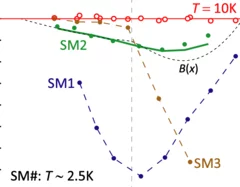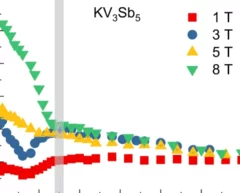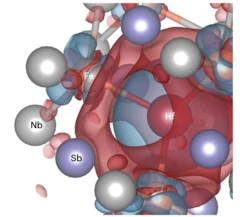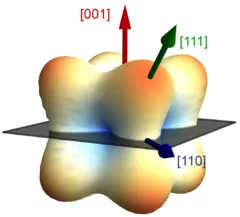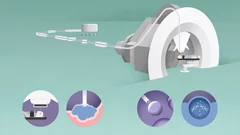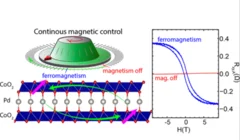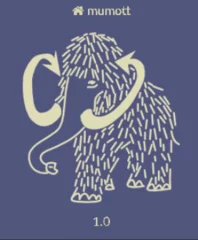Scientific Highlights
Spin-orbit driven superconducting proximity effects in Pt/Nb thin films
Manipulating the spin state of thin layers of superconducting material is a promising route to generate dissipationless spin currents in spintronic devices. Approaches typically focus on using thin ferromagnetic elements to perturb the spin state of the superconducting condensate to create spin-triplet correlations. We have investigated simple structures that generate spin-triplet correlations without using ferromagnetic elements.
Unconventional charge order and superconductivity in kagome-lattice systems as seen by muon-spin rotation
Kagome lattices are intriguing and rich platforms for studying the intertwining of topology, electron correlation, and magnetism. These materials have been subject to tremendous experimental and theoretical studies not only due to their exciting physical properties but also as systems that may solve critical technological problems. We will review recent experimental progress on superconductivity and magnetic fingerprints of charge order in several kagome-lattice systems from the local-magnetic probe point of view by utilizing muon-spin rotation under extreme conditions, i.e., hydrostatic pressure, ultra low temperature and high magnetic field.
Strong phonon softening and avoided crossing in aliovalence-doped heavy-band thermoelectrics
Aliovalent doping is a way to optimize the electrical properties of semiconductors, but its impact on the phonon structure and propagation is seldom considered properly. Here we show that aliovalent doping can be much more effective in reducing the lattice thermal conductivity of thermoelectric semiconductors than the commonly employed isoelectronic alloying strategy. We demonstrate ...
On the trail of blue bones
The bones of the tree hollow toad tree frog are turquoise blue. Our team is currently investigating the nanostructure of the bone and its significance for the frog.
Direct observation of exchange anisotropy in the helimagnetic insulator Cu2OSeO3
The helical magnetic structures of cubic chiral systems are well explained by the competition among Heisen- berg exchange, Dzyaloshinskii-Moriya interaction, cubic anisotropy, and anisotropic exchange interaction (AEI). Recently, the role of the latter has been argued theoretically to be crucial for the low-temperature phase diagram of the cubic chiral magnet Cu2OSeO3, which features tilted conical and disordered skyrmion states for a specific orientation of the applied magnetic field (μ0H⃗ ∥ [001]). In this study ...
Physics against Cancer: How PSI pioneered modern proton therapy
A recently published book tells the story of scientists and physicians at PSI developing a revolutionary technique to treat cancer.
Emergent Magnetism with Continuous Control in the Ultrahigh-Conductivity Layered Oxide PdCoO2
The current challenge to realizing continuously tunable magnetism lies in our inability to systematically change properties, such as valence, spin, and orbital degrees of freedom, as well as crystallographic geometry. Here, we demonstrate that ferromagnetism can be externally turned on with the application of low-energy helium implantation and can be subsequently erased and returned to the pristine state via annealing.
Importance of Identifying Key Experimental Parameters for the Li-ion Battery Performance Testing
The mass loading of Si-graphite electrodes is often considered as a parameter of secondary importance when testing their performance. However, if a sacrificial additive is present in the electrolyte, the electrode loading becomes the battery cycle-life-determining factor. A lower loading was obtained by keeping slurry preparation steps unchanged from binder to binder and resulted in a longer lifetime for some of the binders. When the final loading was kept constant instead, the performance became independent of the binder used.
MUMOTT V1.0 released!
We are happy to announce the release of MUMOTT (multi-modal tensor tomography) 1.0, an all-Python package for the analysis of tensor tomography measurements!
2023 Physics Lab Award for Stephan Burkhalter
Stephan Burkhalter (PhD student in our group) is the recipient of this year’s Lab Award of the Physics Department at ETH Zurich.
